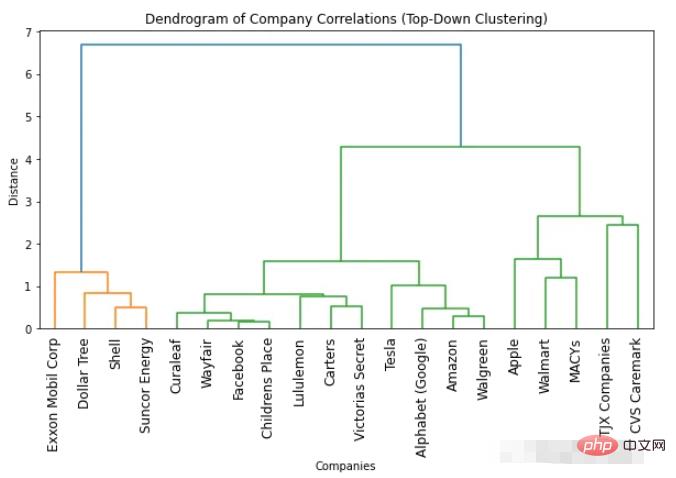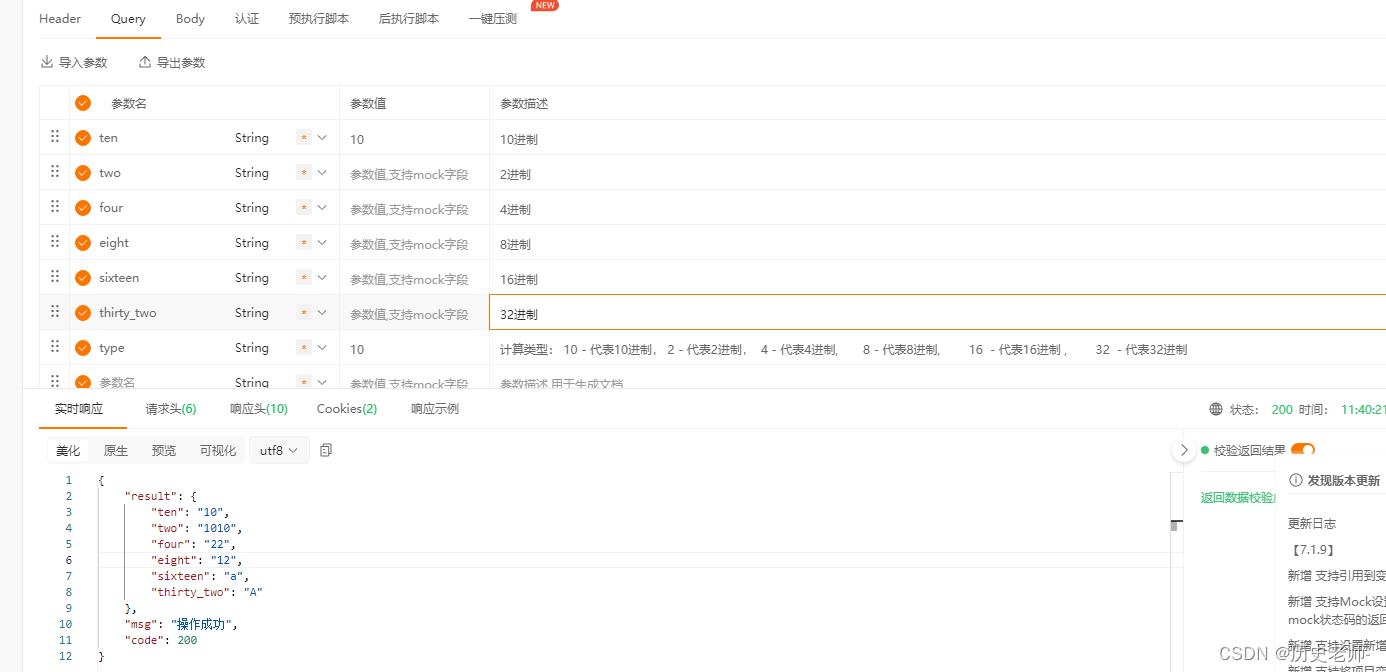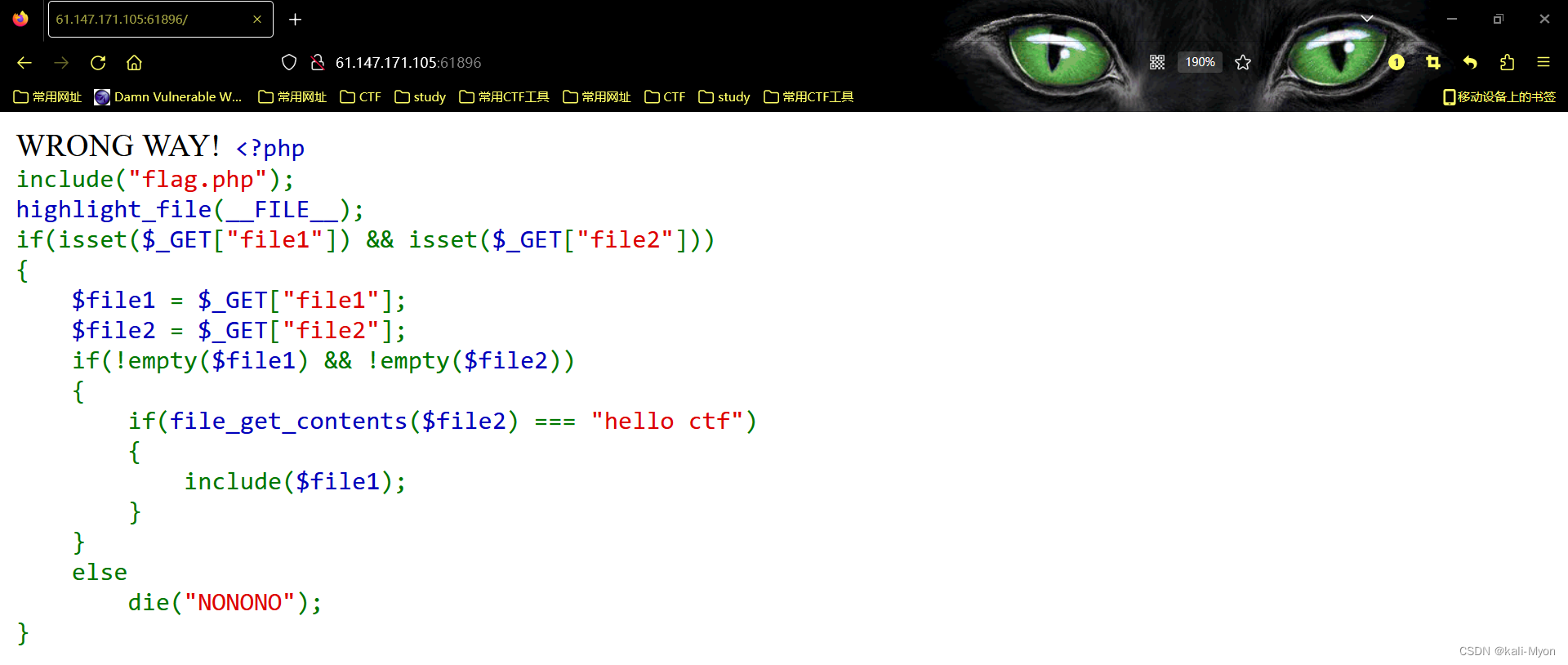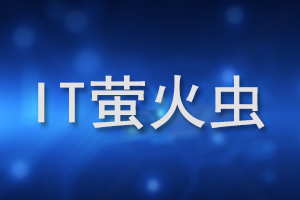树状图
树状图是显示对象、组或变量之间的层次关系的图表。树状图由在节点或簇处连接的分支组成,它们代表具有相似特征的观察组。分支的高度或节点之间的距离表示组之间的不同或相似程度。也就是说分支越长或节点之间的距离越大,组就越不相似。分支越短或节点之间的距离越小,组越相似。
树状图对于可视化复杂的数据结构和识别具有相似特征的数据子组或簇很有用。它们通常用于生物学、遗传学、生态学、社会科学和其他可以根据相似性或相关性对数据进行分组的领域。
背景知识:
“树状图”一词来自希腊语“dendron”(树)和“gramma”(绘图)。1901年,英国数学家和统计学家卡尔皮尔逊用树状图来显示不同植物种类之间的关系[1]。他称这个图为“聚类图”。这可以被认为是树状图的首次使用。
数据准备
我们将使用几家公司的真实股价来进行聚类。为了方便获取,所以使用 Alpha Vantage 提供的免费 API 来收集数据。Alpha Vantage同时提供免费 API 和高级 API,通过API访问需要密钥,请参考他的网站。
import pandasaspd
import requests
companies={'Apple':'AAPL','Amazon':'AMZN','Facebook':'META','Tesla':'TSLA','Alphabet (Google)':'GOOGL','Shell':'SHEL','Suncor Energy':'SU',
'Exxon Mobil Corp':'XOM','Lululemon':'LULU','Walmart':'WMT','Carters':'CRI','Childrens Place':'PLCE','TJX Companies':'TJX',
'Victorias Secret':'VSCO','MACYs':'M','Wayfair':'W','Dollar Tree':'DLTR','CVS Caremark':'CVS','Walgreen':'WBA','Curaleaf':'CURLF'}科技、零售、石油和天然气以及其他行业中挑选了 20 家公司。
import time
all_data={}
forkey,valueincompanies.items():
# Replace YOUR_API_KEY with your Alpha Vantage API key
url=f'https://www.alphavantage.co/query?function=TIME_SERIES_DAILY_ADJUSTED&symbol={value}&apikey=<YOUR_API_KEY>&outputsize=full'
response=requests.get(url)
data=response.json()
time.sleep(15)
if'Time Series (Daily)'indataanddata['Time Series (Daily)']:
df=pd.DataFrame.from_dict(data['Time Series (Daily)'], orient='index')
print(f'Received data for {key}')
else:
print("Time series data is empty or not available.")
df.rename(columns= {'1. open':key}, inplace=True)
all_data[key]=df[key]在上面的代码在 API 调用之间设置了 15 秒的暂停,这样可以保证不会因为太频繁被封掉。
# find common dates among all data frames
common_dates=None
fordf_key, dfinall_data.items():
ifcommon_datesisNone:
common_dates=set(df.index)
else:
common_dates=common_dates.intersection(df.index)
common_dates=sorted(list(common_dates))
# create new data frame with common dates as index
df_combined=pd.DataFrame(index=common_dates)
# reindex each data frame with common dates and concatenate horizontally
fordf_key, dfinall_data.items():
df_combined=pd.concat([df_combined, df.reindex(common_dates)], axis=1)将上面的数据整合成我们需要的DF,下面就可以直接使用了
层次聚类
层次聚类(Hierarchical clustering)是一种用于机器学习和数据分析的聚类算法。它使用嵌套簇的层次结构,根据相似性将相似对象分组到簇中。该算法可以是聚集性的可以从单个对象开始并将它们合并成簇,也可以是分裂的,从一个大簇开始并递归地将其分成较小的簇。
需要注意的是并非所有聚类方法都是层次聚类方法,只能在少数聚类算法上使用树状图。
聚类算法我们将使用 scipy 模块中提供的层次聚类。
1、自上而下聚类
import numpyasnp
import scipy.cluster.hierarchyassch
import matplotlib.pyplotasplt
# Convert correlation matrix to distance matrix
dist_mat=1-df_combined.corr()
# Perform top-down clustering
clustering=sch.linkage(dist_mat, method='complete')
cuts=sch.cut_tree(clustering, n_clusters=[3, 4])
# Plot dendrogram
plt.figure(figsize=(10, 5))
sch.dendrogram(clustering, labels=list(df_combined.columns), leaf_rotation=90)
plt.title('Dendrogram of Company Correlations (Top-Down Clustering)')
plt.xlabel('Companies')
plt.ylabel('Distance')
plt.show()
如何根据树状图确定最佳簇数
找到最佳簇数的最简单方法是查看生成的树状图中使用的颜色数。最佳簇的数量比颜色的数量少一个就可以了。所以根据上面这个树状图,最佳聚类的数量是两个。
另一种找到最佳簇数的方法是识别簇间距离突然变化的点。这称为“拐点”或“肘点”,可用于确定最能捕捉数据变化的聚类数量。上面图中我们可以看到,不同数量的簇之间的最大距离变化发生在 1 和 2 个簇之间。因此,再一次说明最佳簇数是两个。
从树状图中获取任意数量的簇
使用树状图的一个优点是可以通过查看树状图将对象聚类到任意数量的簇中。例如,需要找到两个聚类,可以查看树状图上最顶部的垂直线并决定聚类。比如在这个例子中,如果需要两个簇,那么第一个簇中有四家公司,第二个集群中有 16 个公司。如果我们需要三个簇就可以将第二个簇进一步拆分为 11 个和 5 个公司。如果需要的更多可以依次类推。
2、自下而上聚类
import numpyasnp
import scipy.cluster.hierarchyassch
import matplotlib.pyplotasplt
# Convert correlation matrix to distance matrix
dist_mat=1-df_combined.corr()
# Perform bottom-up clustering
clustering=sch.linkage(dist_mat, method='ward')
# Plot dendrogram
plt.figure(figsize=(10, 5))
sch.dendrogram(clustering, labels=list(df_combined.columns), leaf_rotation=90)
plt.title('Dendrogram of Company Correlations (Bottom-Up Clustering)')
plt.xlabel('Companies')
plt.ylabel('Distance')
plt.show()
我们为自下而上的聚类获得的树状图类似于自上而下的聚类。最佳簇数仍然是两个(基于颜色数和“拐点”方法)。但是如果我们需要更多的集群,就会观察到一些细微的差异。这也很正常,因为使用的方法不一样,导致结果会有一些细微的差异。
以上就是Python怎么使用树状图实现可视化聚类的详细内容,转载自php中文网






发表评论 取消回复